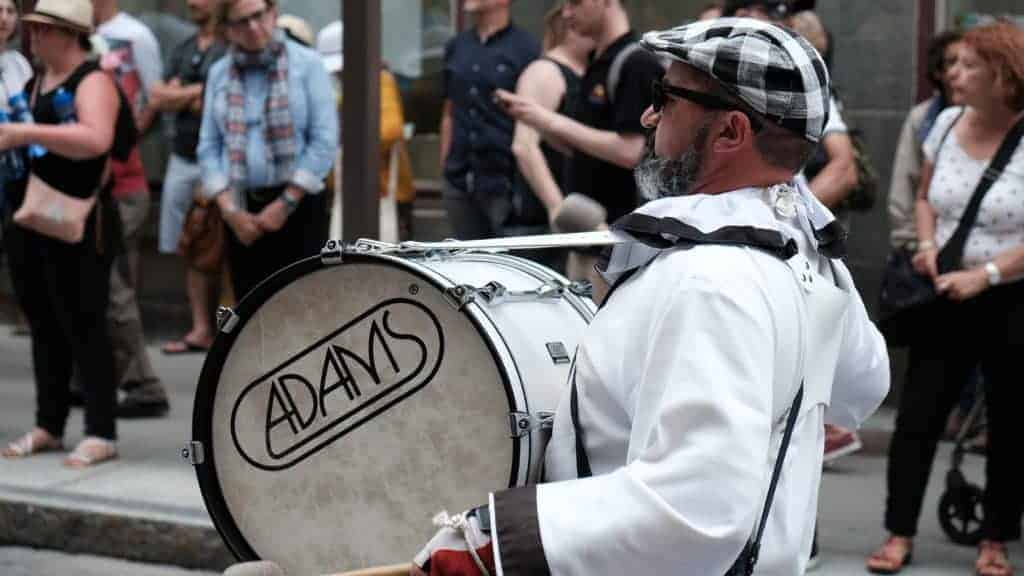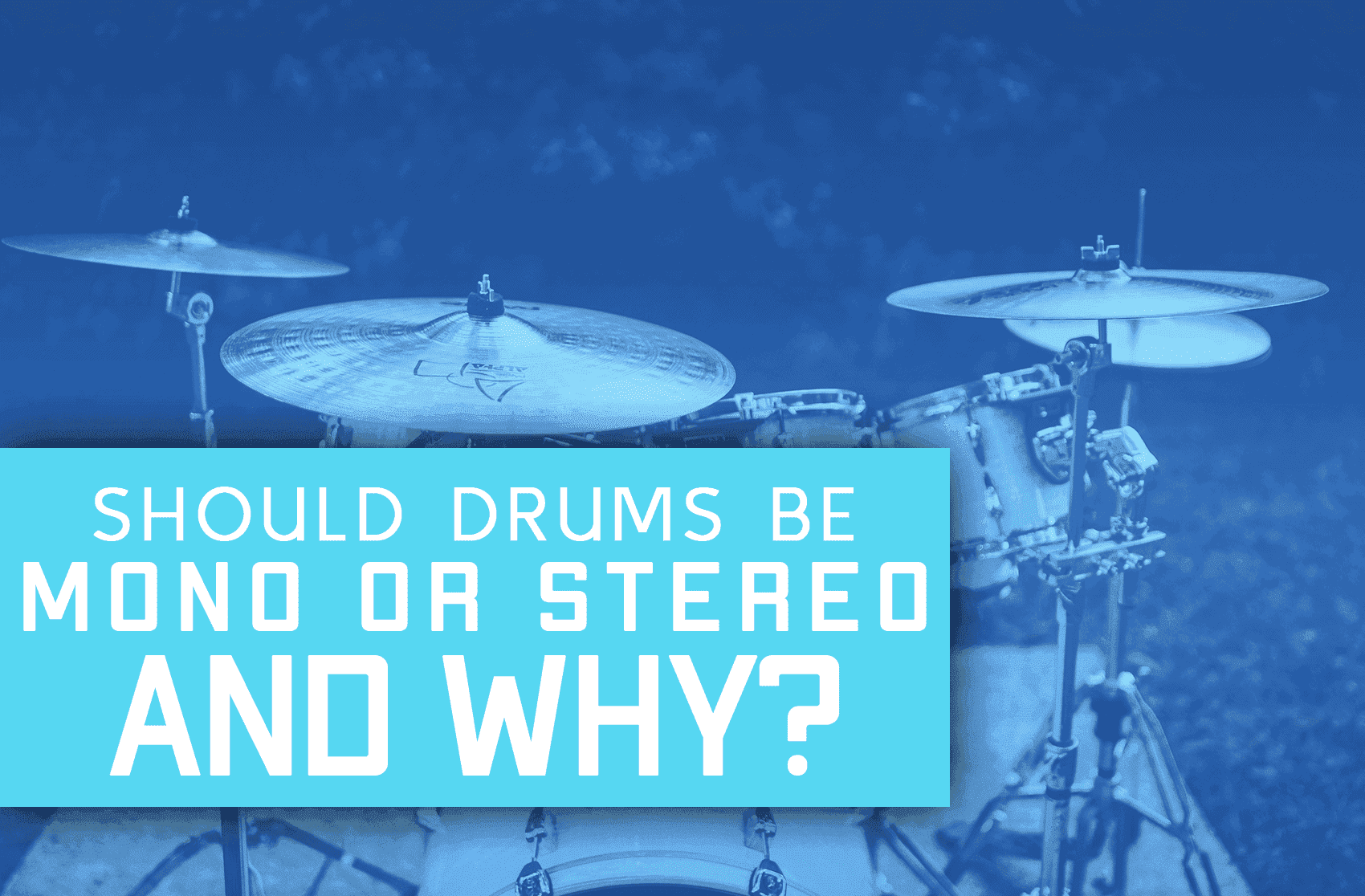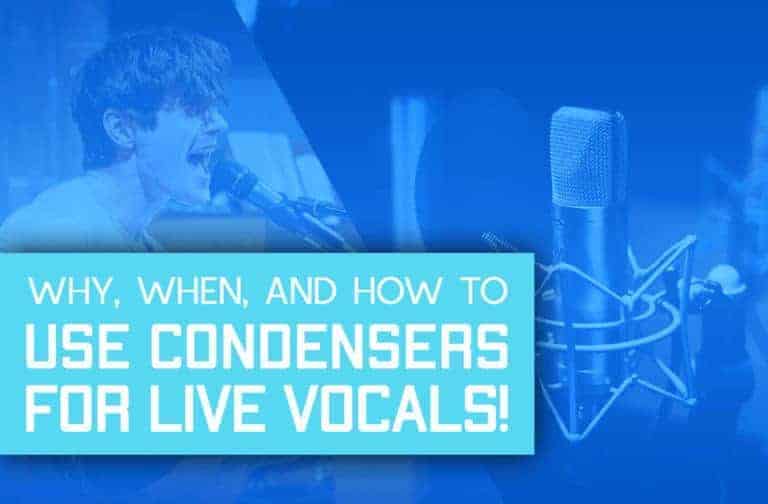When I started producing and mixing music, I didn’t know which drums should be mono and which should be stereo.
So at first, I took a lot of chances, and sometimes I could get them to sound how I wanted, but sometimes I couldn’t.
As time passed, I did some research, and I’ve found what works best for every drum in every scenario.
The kick and the snare should be mono, the open-hats and the toms should be panned, and the closed hi-hats can be both panned and stereo.
However, they don’t have to be.
Sometimes, you’d want to spread your drums differently around the stereo field.
But, before we talk about that, we have to understand the basics.
The Difference Between Mono And Stereo
To understand whether we should set our drums to mono or stereo, we must understand the difference between the two.
Mono
Mono tracks use only one single channel. It can be reproduced through several speakers, but all speakers are still producing the same copy of the signal.

Stereo
Stereo channels send two signals, one for each speaker.
You can use different channels, one for the left speaker and one for the right speaker.
You can use stereo channels to create directionality, perspective, and space.
The vast majority of audio systems today support stereo signals.

Conclusion
With stereo, each one of your ears gets a signal that is different from that of the other ear. With mono, both your ears get the exact same signal.
I’ve written a full guide about the difference between mono and stereo where I cover the topic in a much more detailed form and tell you exactly how you can take advantage of a huge tool called “the stereo field” to massively help your productions.
The Difference Between Mono & Stereo – Explained Simply!
Which Drums Should Be Mono And Which Should Be Stereo?
Kickdrum – Mono

Traditionally, the kick is a drum that shouldn’t be panned or have any width at all.
Since low frequencies aren’t directional, we can’t really understand the direction they’re coming from. Therefore, there is no point in panning them or making them stereo. And the kick contains mainly low frequencies.
Moreover, when you make something wider, you push it more towards the back of the mix instead of the front.
And usually, you want the kick drum to be centered, and upfront even if it is a super soft one.
Snare – Stereo/Mono

The snare is one of the elements that is totally up to you and your song.
Usually, snares tend to be stereo, but several reasons might make you consider making them mono.
If you want to put more focus towards your snare and make it more centered, and impactful, you might want to set it to mono. The reason for that is the same for the kick – As you make something wider, you also push it back in the mix.
But, stereo simulates the sound of space. Therefore, snares do sound better in stereo.
That’s why it’s important to A/B test this on every mix that you work on, and determine that accordingly.
My recommendation – Widen the top frequencies of the snare, and keep its low-end frequencies mono.
This way, you can keep the snare powerful and save the sound of the real space.
You can do that with a multiband stereo imager.
Hi-hats/Open Hats/Crashes – Panned/Stereo

Hi-hats are usually panned towards the sides, and sometimes, they’re set to stereo.
But, you’re probably wondering – why not set them to mono?
The reason for this is the hi-hats’ frequency focus range.
Naturally, the hi-hats’ main focused frequency area is the top mid-range and the high-end.
Therefore, they don’t need to be powerful or impactful, and we can take advantage of that and place them far from the center in the stereo field.
Panned Hihats
Hi-hats are one of the most common panned elements.
Usually, you pan hi-hats to make space for the other drums in your mix, such as the kick drum and the snare.
But you can also pan your hi-hats to create special fx.
Nowadays, it’s super popular in genres like Hip-Hop and Future Bass to attach your panner to an LFO envelope, so it continuously shifts between the left and right.
A plugin that allows you to do that super easily is LFO-Tool by XferRecords.

It has lots of amazing LFO-shapes presets, and it also allows you to make your own shapes.
Then it allows you to use them to control volume, panning, filtering, and resonance.
I was actually really surprised at how fast I got super creative results right after buying LFO-Tool from Plugin Boutique.
Stereo Hi-hats
This is actually not that common to make your hi-hats stereo, but sometimes, you have to.
Sometimes you’ll not be able to make your hi-hats fit in the mix with panning, and you’ll not be able to keep them centered as well because they’ll interrupt other elements in the mix that way.
So, what should you do?
You should push the hi-hats more towards the sides, and widen them. This way, they won’t be at only one side at a time, and they won’t interrupt other elements in the mix.
Toms/Percussions – Panned/Mono

Usually, toms should be sort of in the middle of the mix.
They shouldn’t be too noticeable, but they also shouldn’t be far in the back of the mix.
Now, you might be asking yourself – How can I get this balance?
I’ll explain how to achieve that in the following paragraph.
There are three main ways that you can use to achieve that –
Panned Toms –
This is my favorite way to fit the toms in the mix.
Since opposed to other panned drums, the toms are focused on the low-end and mid-range and not on the high-end, you can easily fit them in the sides of the mix.
Plus, it also adds extra width to the track, so why not?
Mono Toms –
Sometimes, you would really want your toms to be dominant and upfront, and it would just make more sense to make them mono.
But, there is a big problem – when toms are set to mono, they fight with the kick and the bass.
Therefore, if you want to set your toms to mono, you’d have to highpass their low-end and make sure that they don’t hit together with the kick.
How To Pan Drums Correctly?
Now that we’ve talked about which drums should be panned let’s talk about how to pan them correctly.
To understand how to pan elements around your mix, we better know what the stereo field is and how to use it correctly.

As you already know, every song consists of mono elements, left/right elements, and full stereo elements (which play both in the left and the right channels).
The stereo field is the range that’s created when mono, left, and right elements are combined.
As you can see in the picture above, the hi-hats should usually be 100% panned to the left/right/both.
And the percussions should be 50% panned to the left/right.
But, if you just pan each drum to one side, your track will sound weird and unbalanced.
Therefore, I always try to spread each group of the frequency spectrum equally around the stereo field.
But what does it mean? I’ll explain.
If I want to pan my closed hi-hats to the left, I try to find an element in my mix that is similar to them (for example – my open hi-hats), and I pan this element to the right.
This way, I can keep my track balanced and make space for the mono elements of the mix.
Should The Drums’ Reverb Be Mono Or Stereo?
Some drums, like the kick drum, usually don’t have any reverb at all.
But, for the drums that do have reverb –
Since stereo reverb simulates the feeling of space, I prefer to set the reverb to stereo, as it helps to create a realistic sound.
However, even though stereo reverb sounds great and exciting on its own, it might negatively affect the context of a mix.
If you want the drums to fill out empty spaces, and to be less upfront, you should use stereo reverb such as hall reverb, studio reverb, etc.
But, if you want the drums to be more directional and upfront, you should use mono reverb such as plate reverb.
But, my favorite way is to pan the reverb just like I panned the drums. This way, I keep the sound realistic and keep my track a lot cleaner.
If you’re not sure how to use reverb correctly, I highly suggest that you check out this tutorial that I’ve written where I explain all the basics and give you all of my top tips and the common mistakes that you should avoid to use reverb correctly.
How To – Use Reverb The Right Way
Conclusion
- Kickdrum – Mono | Snare – Stereo/Mono | Hi-hats/Open Hats/Crashes – Panned/Stereo | Toms/Percussions – Panned/Mono.
- It’s better to spread the frequency spectrum groups equally around the stereo field.
- Since stereo reverb simulates the feeling of space, I prefer to set the reverb to stereo, as it helps to create a realistic sound.







